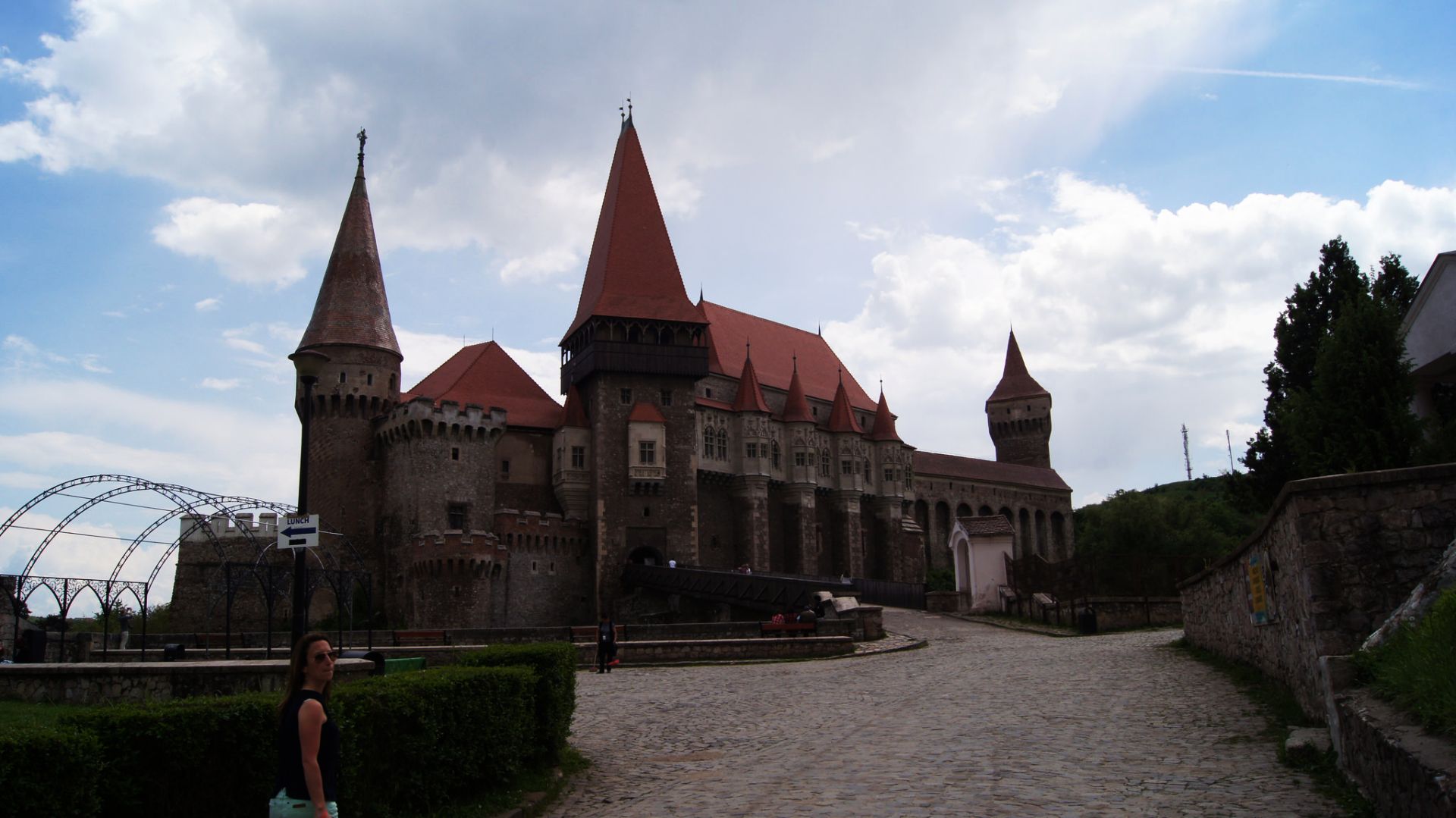
This tour will take you through some of the most interesting Medieval sites in Hunedoara county in Transylvania. The 380 km tour's main objectives are the Deva Fortress, Corvin Castle in Hunedoara and Saint Nicholas church in Densuș.
Deva Fortress is located atop a volcanic neck in the Poiana Ruscă Mountain Range within the Western Carpathian Mountains of Romania. From the foot of the hill, the city of Deva spreads out, beginning with Magna Curia and the public park. Work started on the stone fortress in the mid-13th century. In 1453 Iancu de Hunedoara expanded the fort, just in time to imprison Unitarian activist Dávid Ferenc (1510–79), who died here. In 1784, during the peasant uprising led by Horea, Crişan and Cloşca, the fortress served as a refuge for terrified nobles fearful of being killed by militant peasants. In 1849 Hungarian nationalists attacked Austrian generals held up in the fort. The four-week siege ended with the mighty explosion of the fortress’ gunpowder deposits, which left it in ruins.
Corvin Castle. Some castles perch on mountains, others skulk in mist-shrouded hills, but Hunedoara’s juts out from an industrial jungle. Despite being surrounded by steel mills, Corvin Castle is Transylvania's most spellbinding fortress. You’ll be thunderstruck the moment you walk over the drawbridge, with pointed turrets rising above, into the stone courtyard. Visitors aren’t shackled to guided tours, so you can stroll freely and let your imagination run wild. Built atop a 14th-century stone fortress by Ioan of Hunedoara, new elements and fortifications were later added to Corvin Castle by Matia Corvin and Gabriel Bethlen. Turkish prisoners performed much of this back-breaking work. The castle well is thought to have been cursed by three Turkish prisoners when they were condemned to death in spite of a promise that they would be freed after its completion. Equally chilling is the Bear Pit, where prisoners were thrown to animals after their usefulness expired. Architectural highlights include the late-Gothic Knights Hall, with armour, cannonballs and a bulky bronze of Ioan of Hunedoara, and the 1440-built Mace Tower. Look out for the faint checkerboard design painted on the tower, and lift your gaze to see a bronze of a medieval knight, placed at the top during a 19th-century restoration.
The Densuș Church (also known as St Nicholas' Church) in the village of Densuș, Hunedoara County, Romania is one of the oldest Romanian churches still standing. It was built in the 7th century with additions made in the 13th century on the site of a 2nd-century Roman temple, with some materials from the Dacian Sarmizegetusa fortress. It has a stone tower above the naos. Inside the church there are 15th century mural paintings that show Jesus wearing Romanian traditional clothes. It is considered that on the setting of the present day church, there was once a Dacian temple dedicated to Zamolxis, upon which the conquering Romans built a temple dedicated to the god Mars. After the Roman administrative withdrawal, the temple became a Christian church, and sermons were held there. Its present form dates from the beginning of the 12th century. Considering its tradition, it dates from the 4th century AD, and is considered the oldest church in Romania and South East Europe.
Tour Price: 100 EUR for one person. (75 EUR/pers. for goups of 2-3 people and 60 EUR/pers. for groups of 4-5 people)
The tour price includes transportation, all entrance fees and guiding fees.